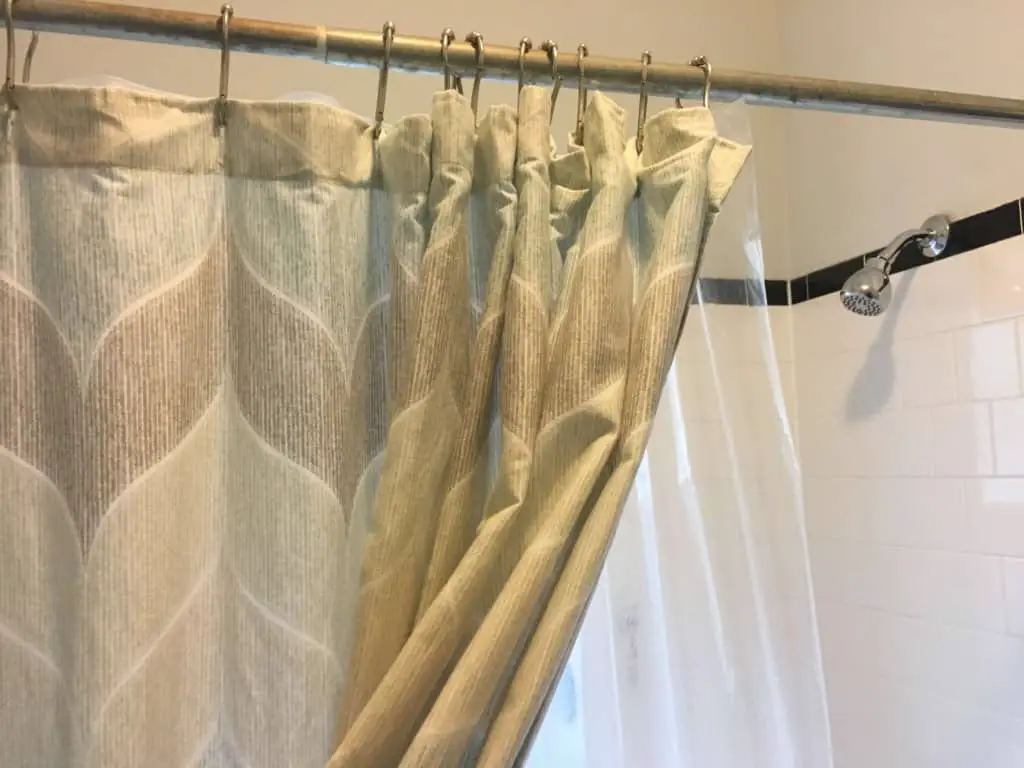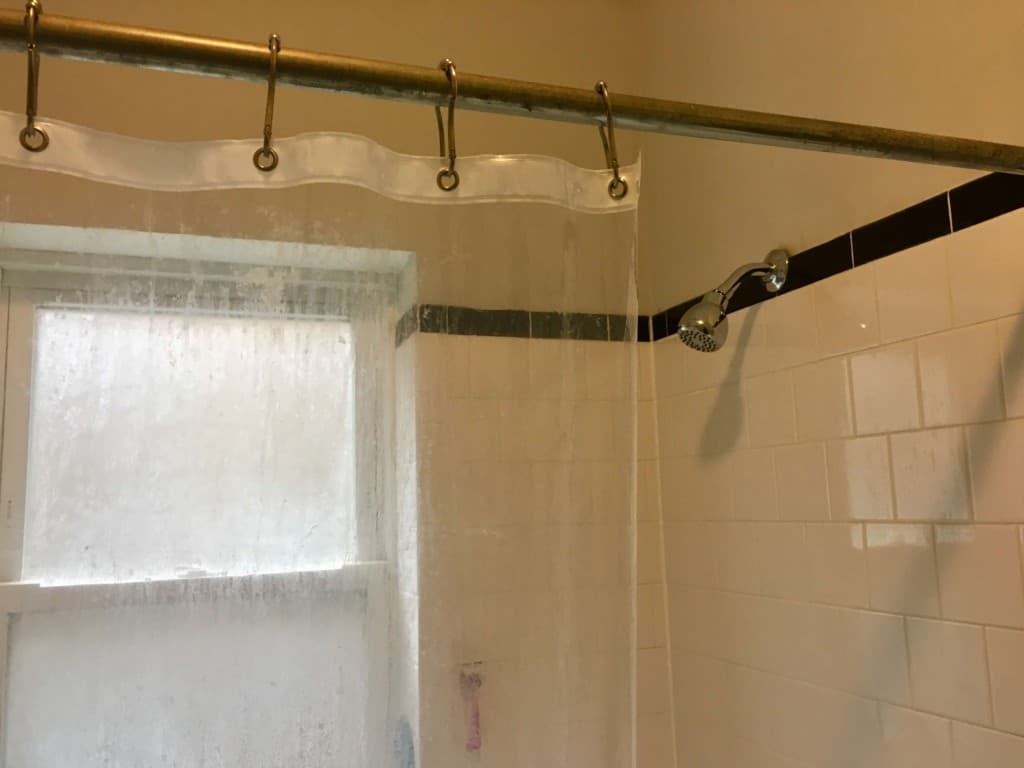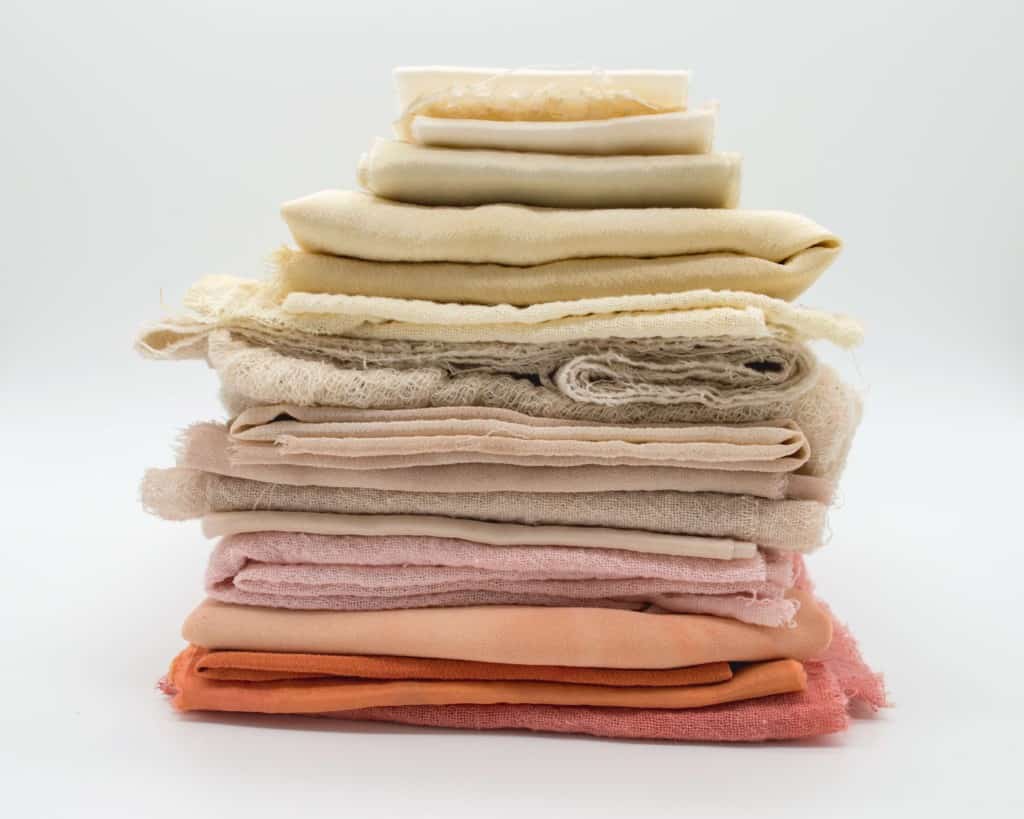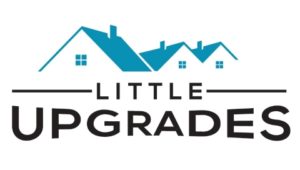
The terms shower curtain and shower liner are often used interchangeably, but are they really the same? Let’s begin with the short answer, and then we’ll branch out from there.
So, what is the actual difference between a shower curtain vs. liner?
Shower curtains are typically used for privacy and decorative purposes and are often made from linen, cotton, polyester, and vinyl. Shower liners are meant to prevent water from splashing out of the shower and are generally made from water-resistant polyester and vinyl.
Before you run away to deck out your bathroom, let’s break down the differences between a shower curtain and liner, whether you really need both, and the best materials to look for when you’re buying them.
Table of Contents
Shower Curtain vs. Liner Defined
The differences between a shower liner and a curtain can be quite confusing. If you look up the definition of each, it doesn’t help the case.
The definition of a shower curtain describes it as a curtain that keeps water from getting out of your shower. And if you try to look up the definition of a shower curtain liner, there are no results!
Even without an easily accessible definition, both shower curtains and shower liners DO EXIST as separate items, as my experience walking down the aisles at Target and Wal-Mart has taught me. Let’s define each one to clear things up.
Shower Curtain Defined

A shower curtain typically hangs outside of the tub or shower base. It might help to keep some water from getting out, but that’s NOT its primary purpose.
It typically has a fancier pattern and can be made out of several different materials, such as polyester, linen, cotton, and vinyl.
Shower curtains are usually opaque, providing privacy for people taking showers. With the variety of patterns, colors, and materials, they are also an easy way to decorate the bathroom, in case you need a little upgrade.
Shower Curtain Liner Defined

A shower liner is what is hung on the shower curtain rod and placed inside your tub or shower base. The primary purpose of liners is to keep water from splashing out of the shower. It is water-resistant and typically made of polyester or vinyl.
Sometimes shower liners are also referred to as shower curtains because they can be used without an outside shower curtain.
You can find opaque shower liners, but many of them are transparent. It usually has weights and/or small suction cups on the corners to keep it from blowing away from the tub.
Now that we have a better understanding of what defines shower curtains and liners, let’s cover whether both are needed.
Do I Need Both a Shower Curtain and a Liner?
Using both a shower curtain and liner is the ideal setup for most people. However, there are pros and cons to each of the three possible setups:
1. Only Shower Liner
Pros:
- Able to keep a better eye on young children with transparent liner
- Easy to see if the clear liner gets dirty
- Less to keep clean if décor is not a priority
Cons:
- Not appealing to the eye (e.g. lacks decorative benefits)
- Can see the grime if the tub gets really dirty
- No privacy if sharing bathroom with roommates (using clear liner)
2. Only Shower Curtain
Pros:
- More privacy if sharing bathroom with others (using opaque curtains)
- Only need to keep 1 thing clean (instead of 2)
Cons:
- Tends to be prone to water damage (such as mold, mildew, and hard water stains)
- Unweighted shower curtains can blow around and touch you during shower
- Isn’t as good at keeping water off the bathroom floor
3. Shower Curtain and Liner
Pros:
- Extended life of shower curtain (when it’s protected by the liner)
- Privacy if sharing bathroom with others
- Ability to decorate according to bathroom style and theme
Con:
- Maintenance of keeping both shower curtain and liner clean
Now that we’ve briefly covered the pros and cons of each option, let me reiterate, that the ideal setup for most people is going to be option #3, using both a shower curtain and a shower liner together.
Now, let’s have a look at the different materials that you can get for both shower liners and curtains.
Materials For Shower Liners and Curtains

You can find different types of shower curtains and liners of all qualities ranging from less than $10 to over $300. With the overwhelming amount of variety, what material do you need to look for to narrow down your options?
Here are a few tips to get you started. Keep in mind some curtains are made from a blend of materials. Be sure to check the specific details about care and cleaning before buying it.
Materials for Shower Curtain Liners
Vinyl
Vinyl shower curtain liners are a great option if you’re on a budget.
Vinyl liners are generally the cheapest option and it gets the job done. It is also easy to wipe down if you want to clean it. Because of how cheap it is, you can easily replace or recycle it when it gets dirty.
When looking for a vinyl shower liner, avoid a liner with PVC (polyvinyl chloride) as it contains toxic chemicals that could affect your health.
The most common alternative is plastic liners made with PEVA (polyethylene vinyl acetate), which doesn’t have the volatile organic compounds that PVC contains.
Polyester
A polyester fabric liner is the best option if you are on a budget, health-conscious, and enjoy privacy.
This material is not only water-resistant but also affordable. It doesn’t contain PVC, which is known to be harmful, and it is typically machine washable. Many polyester fabric shower curtain liners are opaque, allowing you to have some privacy if you use only a liner.
If you’re looking for the non toxic best shower curtain liner, check out my other post for a complete breakdown.
Materials for Shower Curtains
Vinyl
Just like there are vinyl shower liners, there are also vinyl shower curtains. Some people like using plastic shower curtains because it then eliminates the need to use both a shower curtain and a liner which we talked about earlier.
If you want a cheap and easy option and don’t want to hassle with a liner and a curtain, then a vinyl shower curtain is a great option for you.
Cotton
A cotton curtain is good if you care about having a decorative curtain and plan on pairing it with a shower curtain liner.
Cotton shower curtains will absorb water, so it’s important to also use a liner to avoid getting mold and mildew on your cotton shower curtain.
The other benefit of cotton fabric or other fabric curtains is that you can throw them right in the washing machine to clean them.
There are endless options of patterns and colors to choose from with cotton shower curtains, so you won’t have any trouble finding one that fits with your bathroom décor.
Linen
Linen is the best if you care about décor, are willing to spend a little more, and don’t mind ironing.
A linen shower curtain is a little stronger and looks sturdier than cotton. However, they tend to be more expensive than your cotton shower curtain.
I did some research on what people are saying about linen shower curtains online, and it sounds like they can shrink when first washed, so it’s a good idea to take a close look at the specific washing instructions.
Linen also wrinkles easily, so it may take a bit of time and work to iron out any wrinkles. Or you could just take a really hot shower and steam out all the wrinkles, two birds with one stone!
Hemp
Hemp is great if you’re looking for an eco-friendly option that avoids using plastic, and is environmental sustainability, but they’re a little more expensive.
Hemp is a sturdy and durable material. A hemp shower curtain is a bit pricey compared to other options—usually over $70.
It is naturally a neutral light brown color and would fit nicely with most décor.
Many hemp shower curtain manufacturers emphasize its environmentally friendly alternative to plastic.
The material doesn’t take long to dry and is naturally resistant to bacteria. You can use it without a liner. However, you do need to wash it every so often, and it is typically machine washable.
Silk or Satin
Silk or satin is a good option if you are careful, looking for an elegant look, and are willing to spend more.
Talk about gorgeous and well beyond my budget for a shower curtain. Did you know that a yard of silk is about $100?
They’re not very common, but a silk shower curtain definitely will add a glamorous touch to your bathroom if that’s the theme you’re going for (or choose faux silk if you can’t afford it, which is made of polyester).
Keep in mind that silk is VERY delicate and can tear easily. You will have to be very careful when using and cleaning it.
Related Questions
How Often Should You Replace Your Shower Curtain?
A plastic shower curtain should be replaced when it has mold or mildew that cannot be cleaned easily, usually ranging between 3 months to a year, depending on how often it’s cleaned. Fabric shower curtains can last several years before needing to be replaced, especially if used with a liner.
How Do I Keep My Shower Curtain Liner from Mildewing?
To prevent a shower curtain liner from mildewing, keep it as dry as possible. After showering, pull the liner to fully extend it along the tub to properly dry. Crack open a window or use a bathroom fan to help with ventilation. Also, wash the shower curtain liner at least once a week.
Are Shower Curtains a Standard Size?
There are three standard shower curtain sizes, 70×70″, 70×72″, and 72×72″. Non standard showers include an oversized shower, a shower stall, and a curved shower rod. You can measure your shower to find out if it’s a standard size. For a walkthrough of how to measure your shower for a new shower curtain, check out my other post.
